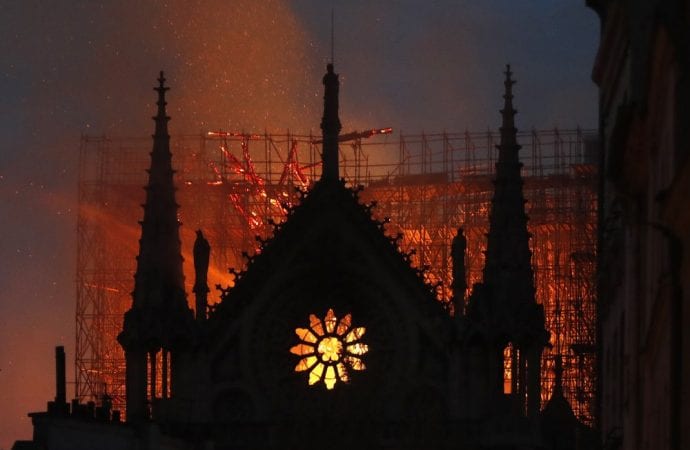While the French legislature has agreed that Notre Dame will be restored to its original state, how that restoration will take place and how the interim safety measures will be implemented during that process remain open questions.
In the aftermath of the blaze that nearly devastated France’s beloved cathedral, one major concern has been potential lead poisoning from the smoke and debris during the nearly 15 hour inferno.
Earlier this week, health officials in Paris announced that a child would be monitored for lead poisoning after appearing at risk following exposure to the fire’s aftermath. To date, nearly 200 French schoolchildren have been tested since the fire, which destroyed the cathedral’s famed spire and caused the roof to collapse resulting in more than 400 tons of lead melting into the atmosphere.
Already six other children have been monitored for lead levels for having between 25-50 micrograms of lead per liter of blood in their system. The latest child’s levels have exceeded that of 50 micrograms, hence the concern - although health officials have not been able to establish whether the lead levels are related to the Notre Dame fire.
Since the April 15 fire, two nearby nurseries and schools for children have closed while officials complete testing on the area, while other nearby locations are engaged in full clean-up operations before the academic year begins in a few weeks. Officials have insisted that the closings were merely out of precaution.
In response to the fallout, one proposal to completely encapsulate the cathedral - including a full covering of its iconic towers - was rejected by city authorities earlier this week, a decision that was made due to logistical concerns rather than aesthetical ones.
“We’re not against the idea,” Deputy Paris mayor Emmanuel Grégoire told the French TV station LCI in an interview on Tuesday. “But it’s a question of feasibility. Putting an enormous seal around Notre-Dame to stop the flow of dust is an incredibly complex decision both from a technical and financial point of view.”
Grégoire’s remarks came in response to a petition made by a local trade union, which had supported the proposal.
According to the U.S.-based Centers for Disease and Control, “children under the age of 6 years are at risk for lead poisoning because they tend to put their hands or other objects into their mouths.” Exposure to lead can occur from consumption of paint chips or dust or soil that contains lead.
The World Health Organization (WHO) has warned that “There is no known level of lead exposure that is considered safe.”
Last month a French environmental group, Robin des Bois, brought a lawsuit against the city saying that it had intentionally endangered human life and should have responded more rapidly to the potential hazards.
As restoration efforts are underway, French President Emmanuel Macron has been vested with decision-making powers, however the new legislation establishes the creation of a new council that will weigh scientific concerns. Along with government officials, the new commission will include Monsignor Patrick Chauvet, the rector archpriest of Notre Dame, and Monsignor Benoist de Sinety, the vicar general, whom have been designated by Paris archbishop Michel Aupetit.
Macron has vowed that the restoration efforts will be complete by the time the city plays host to the 2024 summer Olympic games, however that goal has been widely scrutinized by architectural experts who have warned that the efforts to fully restore the cathedral will take much longer.
To date, over $900 million dollars have been pledged from both private and corporate donors around the globe to restore the cathedral.

